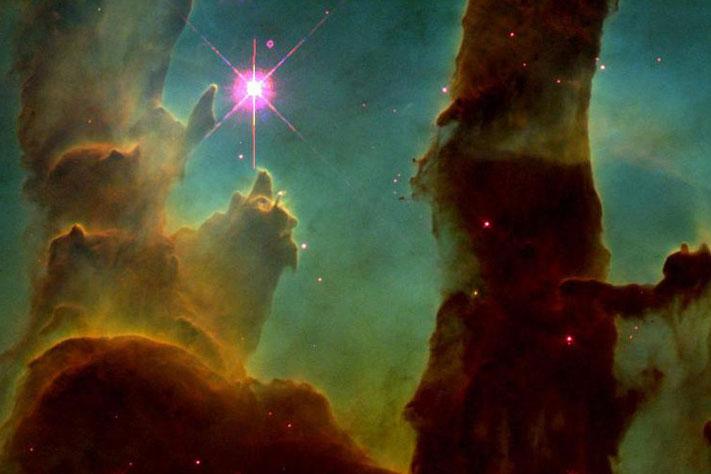
Image: Courtesy NASA/JPL-Caltech.
Key players behind the Australian-New Zealand joint bid to host the $2.1 billion Square Kilometre Array radio telescope will launch a grid Cloud computing initiative by September with the aim of potentially harvesting the computing and storage power of desktops worldwide.
The International Centre for Radio Astronomy Research (ICRAR), along with iVEC, the company running the $80 million high performance computing Pawsey Centre at CSIRO in Western Australia, are set to launch a “citizen science” application this year based on the open source Nereus V Cloud computing technology developed at Oxford University. The application, dubbed “theskynet” by Australian researchers, would grant anyone not affiliated with the global telescope project access to the datasets formed out of the array’s work.
It could effectively become a wider desktop-based Cloud initiative, according to two Oxford University researchers who undertook a three-month research project (PDF) earlier this year to explore Cloud computing options as an alternative to the exaflop-capable supercomputer believed to be required by 2020 to crunch through the data output by the final telescope array.
Once complete in mid-2013, the Pawsey Centre being constructed as part of the telescope array bid would be capable of petaflop computing, making it the third fastest supercomputer in the world based on the most recent listings in November 2010.
The first two stages of the Pawsey Centre, which include a HP POD modular data centre and a second, GPU-based processing centre, would be capable of computing power in excess of 200 teraflops and storage of about 1.5 petabytes. The project is expected to deliver up to an exabyte a day of raw data, compressed to some ten petabytes of data in images for storage.
Data would be transferred over some of the fibre rolled out by Nextgen networks as part of the Federal Government’s $250 million Regional Broadband Blackspot Program.
However, the researchers claimed that even with such a computer, the resultant data would be impractical to store. Use of multi-tenanted public Cloud computing offerings like Amazon Web Service’s EC2 storage platform for the SKA’s effort would cost approximately $US455,000 per year ($AU427,125 at time of writing) to operate.
Instead, the researchers prototyped a Nereus V testbed using 200 clients at the University of Western Australia, Curtin University and iVEC with two servers deployed through management at a NereusCloud domain. The clients used for processing included Mac Minis and some Linux-based desktop PCs with at least two gigabytes of memory.
The Oxford-developed Nereus was chosen over grid computing alternative BOINC, which already harnesses five petaflops of data through similar computing projects, due to the former’s Java base and greater security.
The researchers recommended widespread use of the computing grid across university campuses to take advantage of the powerful computers and high-bandwidth fibre already available there. However, director of the Australia-New Zealand SKA project, Peter Quinn, said that the research institutes involved would receive greater use of the data by expanding it beyond campuses to citizen scientists otherwise not involved in the project.
“We’re keen to expose the datasets to the public,” he said. “You get a multiplication of the science utilisation and science return on this data.”
Quinn’s desire to see the citizen science project going is linked to his push to revive the lapsed Virtual Observatory project in Australia and globally. The international initiative would use similar technologies to provide a central registry of disaggregated datasets from global telescopes, including those not within the Square Kilometre Array, for free access to scientists. Though Australia intermittently contributed to the project’s international alliance since 2005, its contribution has since lapsed.
Join the CIO Australia group on LinkedIn. The group is open to CIOs, IT Directors, COOs, CTOs and senior IT managers.
